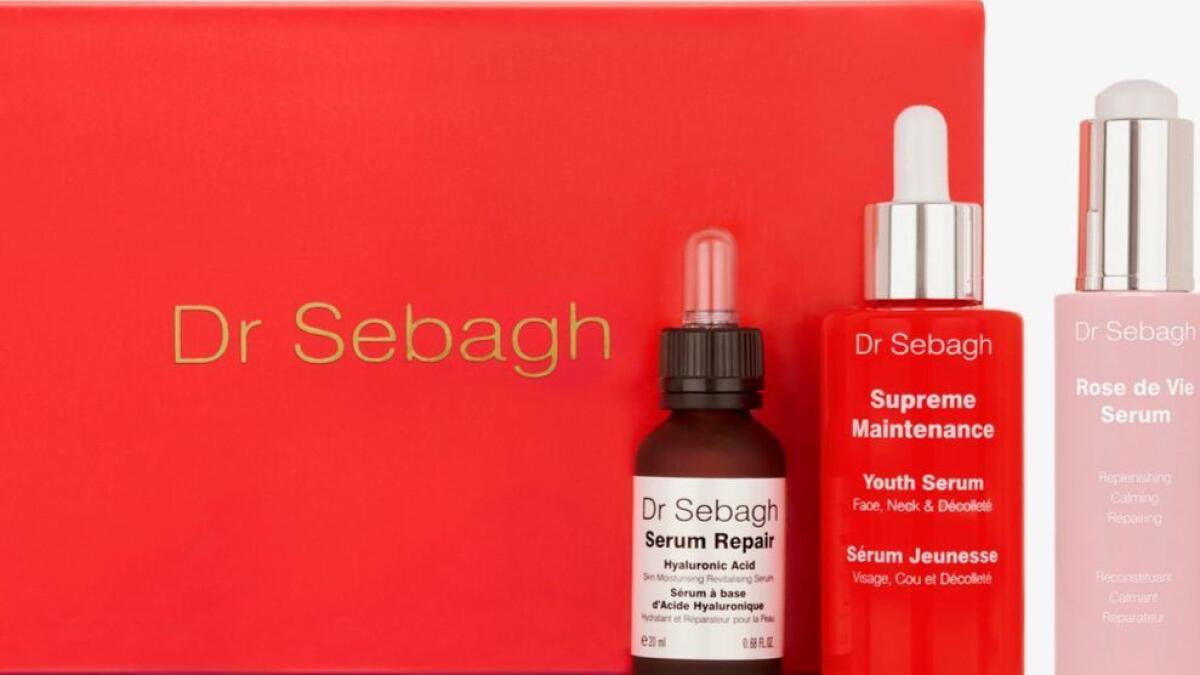Q&A: Good routines and oils — not knives — will help you retain that youthful look, skin guru says
Dr. Jean-Louis Sebagh has loomed large in the beauty universe for more than 30 years. After earning his medical degree at the University of Paris, he started a career as a cosmetic surgeon in the early ’80s and fine-tuned his skills in Los Angeles.
After he returned to Paris, Sebagh became an early advocate of nonsurgical procedures such as Botox and collagen and vitamin injections — a collection of treatments that he christened “age maintenance.”
In 2005, he paired with longtime client Cindy Crawford on the launch of her Meaningful Beauty products, and the following year, he launched his own line of Dr Sebagh products.

Patients travel to his offices in London and Paris for various treatments, and he visits other cities on a regular basis to meet with clients and the bricks-and-mortar establishments where his products are sold.
Earlier this year, he was at Barneys New York in Beverly Hills, chatting with customers and delivering bits of advice in a manner reminiscent of a venerable — and enthusiastic — college professor who works as a life coach in his spare time. The 63-year-old, with his remarkably unlined face and glowing skin, is adamant that we understand the basics of skin care.
For years, many physicians — and the FDA — have looked askance at cosmeceuticals. But lately it seems as if some of the experts are changing their minds — about certain ingredients anyway. Is it possible that the medical establishment will have to change its tune?
Of course. Let me explain the history.
Thirty years ago, skin care was oil and water and perfume. You have to have oil. If you don’t restore the oil, it’s like the house without the roof. Then you need to have hydration. To keep the hydration in your skin, you need to have a molecule called hyaluronic acid. We all have it in our skin, but as we age, we lose it. So we need to restore it.
Then we got cosmeceuticals on the market with active, anti-aging ingredients to prevent, slow down and eventually, prevent the aging of the skin.
Can you talk a little about those ingredients?
When we say anti-aging, it means different families of ingredients: anti-aging peptides and antioxidants. Antioxidants can come from things like green tea, gogi berry and chocolate. Vitamins E and C are famous antioxidants.
A modern day or night cream comes with oil, hyaluronic acid and a certain concentration of active ingredients. They almost all do the same job. And that’s fine.
But if you want to fight the aging process, you want to be as efficient as possible. That’s why I came up with the concept of blending serums.
[The Sebagh line includes a series of serums, and its creator urges clients to customize their own routines by mixing and matching doses according to their skin types and age.]
What are you using on my hand right now and why?
This rose oil [in the Rose de Vie serum] is a pure organic oil. This next product [the Serum Repair] is 60% hyaluronic acid, and this ... is the highest concentration of any serum on the market. And of course, we have the [Supreme Maintenance] Youth Serum, which has 95% active ingredients. It’s all the ingredients we mentioned: anti-aging peptides, antioxidants, vitamin C, glowing complexes, pollution filters.
I’ve read a couple of articles in which you’ve been asked about the Western obsession with image, especially when it comes to millennials.
Beauty is a complicated subject. Two days ago in London, I saw a girl … a little anorexic, walking down the street [holding her phone high]. She was basically following herself with a camera. I’ve never seen that in my life. It’s beyond narcissism. There’s no return on that. That is very sad.
And you have some thoughts about pollution from smartphones?
Yes. It’s the new pollution — the HEV [high-energy-visible] light pollution that is emitted from your smartphone. It can be as damaging as the sun.
What, if anything, distinguishes Los Angeles from other cities in terms of how its residents think about image and how they take care of themselves?
There’s no difference — no difference between the French, English, Chinese and American women. They are slightly different, but mostly the same.
So you don’t buy into the stereotypes about the vanity of Los Angeles women?
Absolutely not. Women — this generation of women — do the maintenance. It’s not narcissism. It’s taking care of yourself.
For fashion news, follow us at @latimesimage on Twitter.




